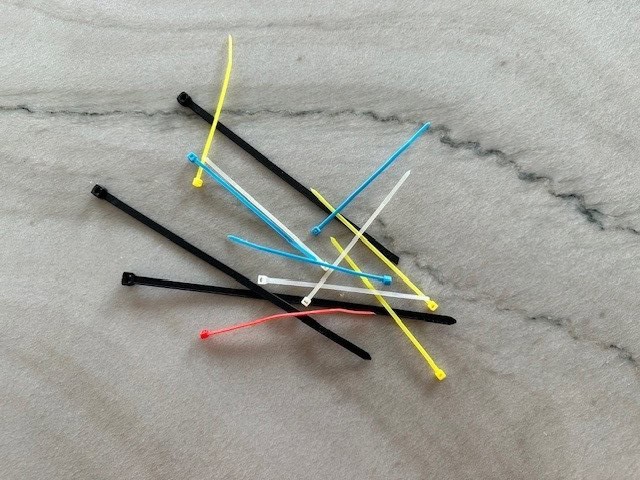Zip ties, also known as cable ties, are versatile fasteners commonly used for bundling and securing cables, wires, and various objects. Made from durable plastic, they consist of a flexible tape section with teeth that engage with a pawl in the head, locking the tie in place. The Zip tie is widely used in both professional and DIY settings due to their ease of use, reliability, and ability to secure objects tightly.
History
The invention of the zip tie dates back to 1958 when electrical company Thomas & Betts developed the first cable tie, originally branded as “Ty-Rap.” Designed for use in the aviation industry, the initial purpose was to bundle wires and cables in aircraft. Over the years, the use of zip ties expanded into various industries and households, becoming an essential tool for countless applications. The design has remained relatively unchanged, a testament to its effectiveness.
Types of Zip Ties
- Standard Zip Ties
- Releasable Zip Ties
- Heavy-Duty Zip Ties
- Colored Zip Ties
- Stainless Steel Zip Ties
- Mounted Head Zip Ties
- Marker Zip Ties
- Heat-Resistant Zip Ties
- UV-Resistant Zip Ties
- Double-Headed Zip Ties
Zip Tie Key Features
- Durability: Made from materials such as nylon or stainless steel.
- Strength: Available in various tensile strengths to handle different loads.
- Versatility: Suitable for a wide range of applications.
- Ease of Use: Simple to apply and secure with a tight lock.
- Weather Resistance: Some zip ties are UV and heat-resistant for outdoor use.
- Variety of Sizes: Available in different lengths and widths to suit various needs.
- Color Coding: Different colors available for easy identification and organization.
- Releasable Option: Some zip ties can be reused thanks to a releasable mechanism.
Choosing the Right Zip Tie
Selecting the appropriate zip tie depends on the specific application. Consider the environment where the zip tie will be used, such as indoors or outdoors, and the load it needs to bear. For heavy-duty applications, opt for thicker, stronger zip ties, while standard ties suffice for lighter tasks. Additionally, for projects requiring organization, colored or marker zip ties can be beneficial.
Zip Tie Recommendations
- Cable Zip Ties, 400 Pack Black Assorted Sizes
- Cable Zip Ties, 600 Pack White Assorted Sizes
- 16 inch Black Heavy Duty Zip Ties, 100 Pieces
Proper Use and Techniques
To use a zip tie, wrap it around the objects you wish to secure and insert the tail into the head, pulling tight until the desired tension is achieved. Ensure that the teeth are engaged properly for a secure hold. When using zip ties for electrical work, avoid overtightening, as this can damage wires. For a neat finish, trim the excess tail using scissors or a cutting tool.
Maintenance and Care
Though zip ties are low-maintenance, it’s important to regularly inspect them in applications where they are exposed to harsh environments. Over time, UV rays, heat, and chemicals can degrade plastic zip ties, so replacing them periodically ensures continued reliability. Stainless steel zip ties offer longer lifespans in extreme conditions.
Safety Tips
When working with zip ties, particularly heavy-duty or stainless steel versions, wear protective gloves to avoid cuts or abrasions. Be cautious when trimming excess material to prevent injury from sharp edges. If securing electrical cables, ensure that zip ties are not overtightened, as this can lead to insulation damage and potential electrical hazards.
Conclusion
Zip ties are a simple yet indispensable tool in both professional and DIY toolkits. Their versatility, strength, and ease of use make them suitable for a wide array of tasks, from cable management to securing objects in place. By selecting the right type of zip tie and using them properly, you can ensure a secure, long-lasting hold for your projects.


